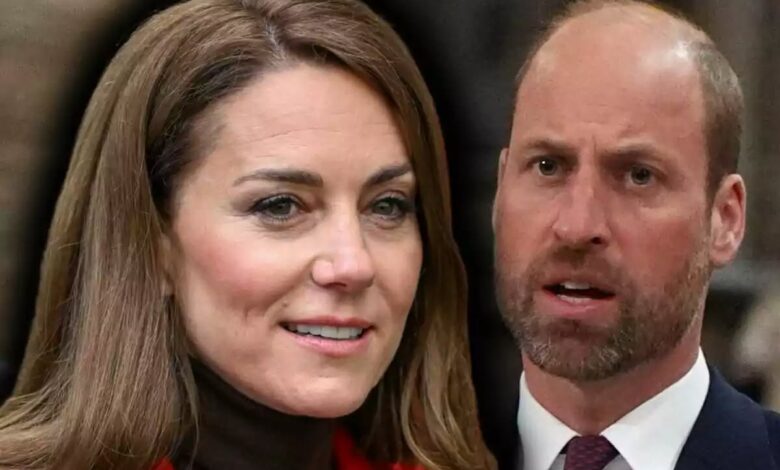King Charles III, Queen Camilla and their grieving families have confirmed

Kate Middleton has always carried herself with a kind of steady grace that people notice long before she ever speaks. It’s the quiet strength, the calm in public storms, the resilience under pressure. And recently, as she wrapped up a preventative chemotherapy course following her cancer diagnosis, that resilience was on full display again.
But long before she became the Princess of Wales, long before the global spotlight, the royal duties, and the relentless media attention, Kate faced a private health scare as a teenager — one that shaped her more than most people realize.
She was still a student at Marlborough College, navigating a busy schedule filled with sports, academics, and the usual teenage chaos, when she noticed a lump forming on the left side of her head. It wasn’t painful, but it wasn’t normal either. She told her mother, Carole, right away.
Carole Middleton didn’t brush it off. She didn’t wait. She booked a doctor’s appointment immediately.
The family physician examined Kate and made it clear: the lump needed to be removed, and soon. The word “serious” hung in the air just long enough to terrify any parent. Within days, surgery was scheduled.
Those who worked at Marlborough still remember Carole showing up on campus looking deeply worried, trying not to unravel, while Kate stayed composed. That was always her nature. She didn’t do theatrics, didn’t ask for special treatment, didn’t act like the world should stop because something scary was happening. She simply handled it.
The surgery happened during the school term. Kate went under anesthesia, had the lump removed, woke up, recovered, and quietly returned to her classes sooner than anyone expected. Teachers and students watched her come back without drama, without self-pity, and without the need to be the center of attention.
Ann Patching, one of the housemistresses, later said that Kate treated the entire ordeal as if it were a minor interruption, not a frightening health scare. Meanwhile, Carole Middleton was visibly shaken — and rightfully so. Her daughter had just undergone a serious operation at a time when another student, Hugo McDermott, had recently died of a brain tumor. That loss cast a long shadow over the school and added even more emotional weight to Kate’s situation.
The surgery left a three-inch scar on her scalp, hidden beneath her hair. The public knew nothing about it for years. Kate moved on, finished school, built her life, and carried that scar as a quiet reminder of what she’d overcome.
It would remain mostly unnoticed until 2011.
During one of her first major royal engagements after marrying Prince William, Kate attended a black-tie dinner at Clarence House. Her hair was styled back just enough that photographers caught a faint line on her head. Suddenly, the world noticed. Speculation took off. Was it an injury? A childhood accident? A sports mishap?
She had played hockey, tennis, and just about everything else in school, so people guessed freely.
Kensington Palace eventually issued a short, rare statement to shut the rumors down. It wasn’t an accident. It wasn’t new. It was the result of a childhood operation, they confirmed — nothing more.
They didn’t offer details. And Kate didn’t, either. She didn’t need to. The scar was part of her story, not the story.
But those who knew her as a teen understood what it represented. Not fear. Not trauma. Strength. Composure. A willingness to face something frightening with a clear head and a steady heart. That quiet grit is exactly what people admire in her today.
The moment also revealed something else — the unwavering role her mother played. Carole Middleton made the call to act quickly, refusing to gamble with her daughter’s health. She drove her to appointments, waited through the operation, and absorbed the emotional shock so Kate wouldn’t have to. That instinctive, fierce protectiveness shaped the close bond Kate still shares with her mother.
That early health scare didn’t define Kate, but it did leave a mark, literally and emotionally. It reminded her how fragile life can be and taught her to stay grounded when fear knocks at the door. And as she entered adulthood, marriage, motherhood, and eventually royal life, that lesson stayed with her.
Now, as she confronts her cancer journey, that same steadiness is there. She faces the cameras with calm eyes. She thanks supporters with sincerity. She shields her children without complaint. She keeps moving forward.
The world sees her poise today and calls it admirable. But that strength didn’t appear out of nowhere. It was forged quietly years ago — in a boarding school, in a hospital room, in a moment when she learned how to walk through fear without letting it consume her.
The scar under her hair isn’t a flaw. It’s a testament. A marker of a moment she met uncertainty head-on and returned to her life without letting it break her stride.
As the Princess of Wales, she carries responsibilities that few people can fully comprehend: the expectations of a nation, the nonstop public scrutiny, and the pressure of preparing for a future role as queen consort. But she carries something else, too — a history of resilience that stretches back long before the royal titles.
And that’s why her supporters admire her the way they do. Not because she’s perfect or polished, but because she’s real. Strong. Human. Someone who has faced fear more than once and continues moving forward with grace.
Kate’s teenage surgery won’t be carved into any royal biography as a defining chapter. But the truth is simple: it shaped her. It revealed the spirit behind the titles. It hinted at the woman she would someday need to be — the one she is now.
A scar hidden beneath her hair, almost invisible to the world, ended up predicting something no one saw coming: the quiet resilience that would one day steady an entire monarchy.